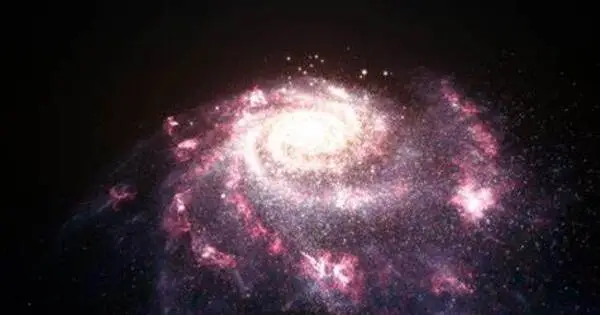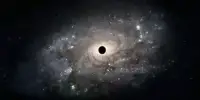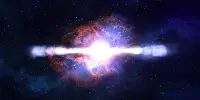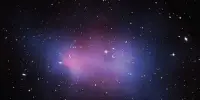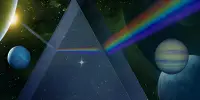The Milky Way galaxy’s center is believed to be home to a supermassive black hole known as Sagittarius A*, which is surrounded by a zone of strong star creation and energetic occurrences. An unusually large number of young stars have been discovered in the immediate neighborhood of a supermassive black hole, and water ice has been discovered near the center of our galaxy.
An international team led by Dr. Florian Peißker of the University of Cologne’s Institute of Astrophysics examined a young star cluster in the immediate vicinity of the supermassive black hole Sagittarius A* (Sgr A*) at the center of our galaxy and discovered that it is much younger than expected.
This IRS13 cluster was identified more than two decades ago, but only now has it been feasible to define the cluster members in detail by merging a wide variety of data – acquired with multiple telescopes over several decades. The stars are only a few hundred thousand years old, making them unusually young for stellar conditions. In comparison, our sun is approximately 5 billion years old. Because of the high-energy radiation and tidal forces of the galaxy, such a big number of young stars should not be in such close proximity to the supermassive black hole.
The analysis of IRS13 and the accompanying interpretation of the cluster is the first attempt to unravel a decade-old mystery about the unexpectedly young stars in the Galactic Center. In addition to IRS13, there is a star cluster, the so-called S-cluster, which is even closer to the black hole and also consists of young stars.
Dr. Peißker
The research was published in The Astrophysical Journal under the title “The Evaporating Massive Embedded Stellar Cluster IRS 13 Close to Sgr A*. I. Detection of a Rich Population of Dusty Objects in the IRS13 Cluster.”
Another amazing result has been published in connection with the current investigation. The James Webb Space Telescope (JWST) was utilized for the first time to record a spectrum free of Galactic Center atmospheric interference. A prism on board the telescope was created at the Institute of Astrophysics by a working group directed by Professor Dr Andreas Eckart, a co-author of the publication.
The present spectrum shows that there is water ice in the Galactic Center. This water ice, which is often found in the dusty discs around very young stellar objects, is another independent indicator of the young age of some stars near the black hole.
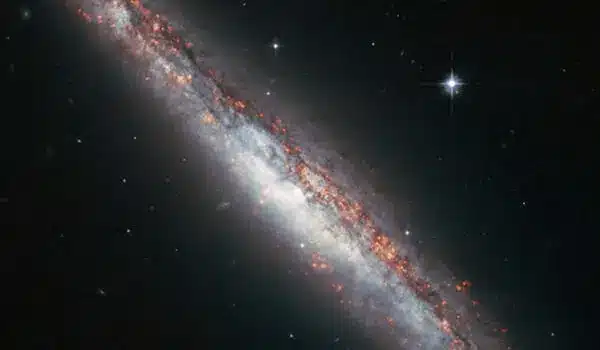
In addition to the unexpected detection of young stars and water ice by the JWST, the researchers led by Dr Peißker have also found that IRS13 has a turbulent history of formation behind it. The study results suggest that IRS13 migrated toward the super massive black hole through friction with the interstellar medium, collisions with other star clusters, or internal processes. From a certain distance, the cluster was then ‘captured’ by the gravitation of the black hole.
A bow shock may have formed at the top of the cluster from the dust around it during this phase, analogous to the tip of a ship in the water. The resulting increase in dust density spurred more star formation. This explains why these young stars are mostly at the top or front of the cluster.
“The analysis of IRS13 and the accompanying interpretation of the cluster is the first attempt to unravel a decade-old mystery about the unexpectedly young stars in the Galactic Center,” Dr. Peißker said in a statement. “In addition to IRS13, there is a star cluster, the so-called S-cluster, which is even closer to the black hole and also consists of young stars. They are also significantly younger than would be possible according to accepted theories.”
The findings on IRS13 provide the opportunity in further research to establish a connection between the direct vicinity of the black hole and regions several light years away. Dr Michal Zajaček, second author of the study and scientist at Masaryk University in Brno (Czech Republic), added:
“The star cluster IRS13 appears to hold the key to understanding the origin of our galaxy’s dense star population.” We have a lot of evidence that very young stars within the range of the supermassive black hole may have arisen in star clusters like IRS13. This is also the first time we’ve been able to distinguish star populations of differing ages – hot main sequence stars and young emerging stars – in a cluster so close to the center of the Milky Way.”
